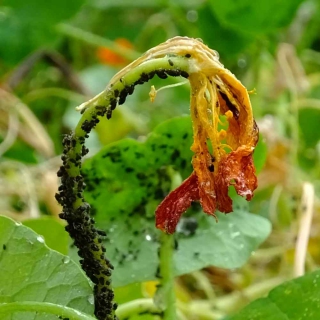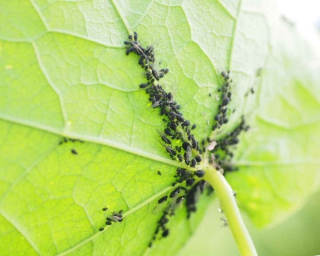

Whether in the vegetable patch, around fruit trees or near rose trees, Nasturtium plant can be propagated without restrictions. It will help deal with aphids and other pests.
It is a twining vine that starts spreading when the weather warms up in spring.
Read also:
If you have heard that these beautiful cute little nasturtium flowers will help you deal with aphids, that hearsay was correct!

Your rose trees, vegetables and other plants are spared from the aphid onslaught!
In other words, if aphids are hogging that climbing vine, they aren’t on any other plants!

→ Another flower also attracts aphids in a similar manner: cosmos.
Other plants have an opposite effect on aphids and repel them. This is the case for marigold and lavender.
This strategy of growing nasturtium to serve as decoys also works for other pest. It also attracts large white, whose caterpillars destroy cabbage leaves.
Once your decoy is in place, visit the growing bed every two or three days. You can spot new aphid colonies on your nasturtium easily. Carefully pick or cut the colonies into a small pail. Do this delicately so aphids don’t fall off and get away.
Your best solution then is to feed them to your chickens, but it’s also good to simply bury them deep under the compost pile or burn them.
Read also on aphids: